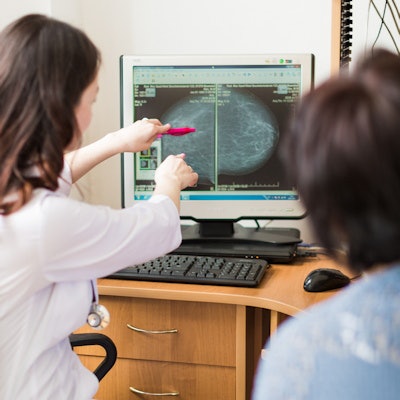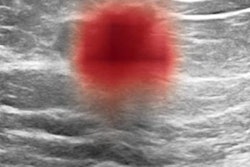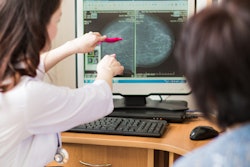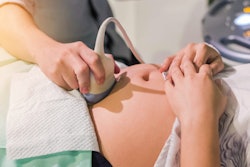
Glandular tissue is associated with future breast cancer risk in women with dense breasts, according to a study of women in South Korea published July 19 in Radiology.
Researchers led by co-lead authors Dr. Su Hyun Lee, PhD, and Dr. Han-Suk Ryu, PhD, from Seoul National University in South Korea said with these findings, the glandular tissue component in breast ultrasound should be considered for risk stratification during screening.
Increased breast density at mammography, defined by the amount of fibroglandular tissue relative to fatty tissue found on images, is a risk factor for developing breast cancer. It can prevent the detection of breast cancer because of its masking effect and cannot distinguish between glandular and fibrous tissue.
The research team wanted to find out the association between the glandular tissue component at screening breast ultrasound and the risk of future breast cancer in women with dense breasts. The group also wanted to find out the association between the glandular tissue component and lobular involution.
The researchers looked at data collected from 8,483 women between 2012 and 2015 with no prior history of breast cancer and an average age of 49 years old. The women underwent breast ultrasound and had dense breasts with negative previous findings from mammography. Out of the total number, 137 women developed breast cancer over a median follow-up time of 5.3 years.
The team found that a moderate or marked glandular tissue component was associated with an increased cancer risk after adjusting for age and breast density. However, the opposite was also determined to be true with lobular involution. Women with no, mild, or moderate involution had greater odds of a moderate or marked glandular tissue component than those with complete involution.
The study authors wrote that further validation is needed for the clinical implementation of glandular tissue during screening breast ultrasound. However, they said it may be useful in stratifying breast cancer risk and the need for supplemental screening in women with dense breasts.
They also called for future studies comparing the component and lobular involution at the same location in the breast.



















